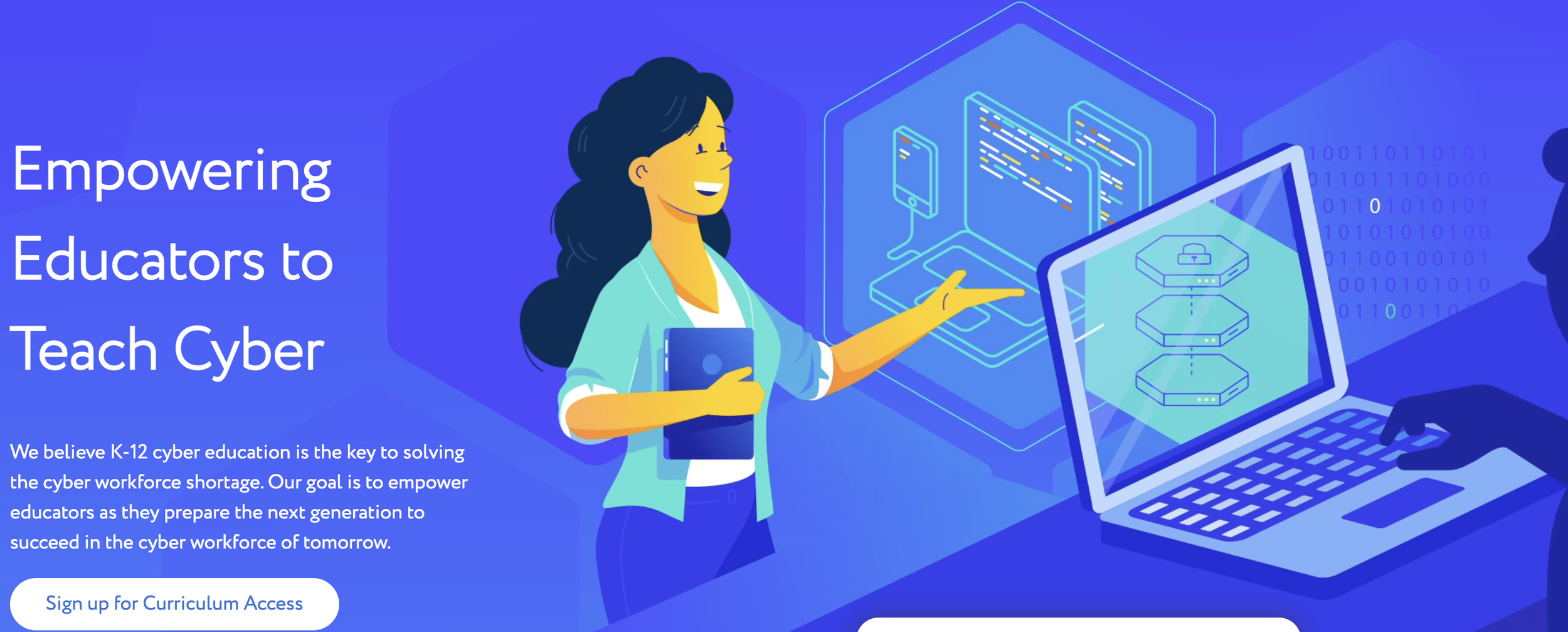11 Free Cybersecurity Resources to Use in the Classroom!
In today’s digital age, teaching students about cybersecurity and digital citizenship is just as important as teaching math, science, or reading. Students spend so much time online, opening the door to many cybersecurity risks. Educators have the unique opportunity to equip students with the tools and knowledge to navigate the digital world safely and responsibly.
If you're looking for ways to bring cybersecurity concepts into your classroom, you're in the right place! Here’s a curated list of 11 free resources—complete with lesson plans, interactive games, and engaging activities—that will help you teach students about cybersecurity and online safety.
1. Common Sense Education
Grade Level: K-12
Best For: Digital Citizenship, Online Safety, Privacy
Why Use It?
Common Sense Education provides a wealth of resources, including lesson plans, activities, videos, and games, aimed at teaching students about online privacy, security, and ethical internet behavior. The material is structured by grade level, so it’s easy to find the right resources for your students.
Get Started Here: commonsense.org/education
2. Cybersecurity Lab by NOVA PBS
Grade Level: Middle School and High School
Best For: Interactive Learning, Real-World Scenarios
Why Use It?
NOVA’s Cybersecurity Lab is an interactive game that immerses students in the role of a cybersecurity expert. They’ll face real-world challenges such as defending systems against cyber-attacks, identifying phishing scams, and understanding encryption. This resource offers a fun way for students to get hands-on experience with cybersecurity concepts.
Get Started Here: pbs.org/wgbh/nova/labs/lab/cyber/
3. Google’s Be Internet Awesome
Grade Level: Elementary and Middle School
Best For: Digital Citizenship, Password Security
Why Use It?
Google’s Be Internet Awesome is perfect for younger students. It teaches the basics of online safety, including strong password creation, phishing prevention, and managing privacy settings, through a fun, interactive game called Interland. The accompanying lesson plans make it easy to integrate into your classroom.
Get Started Here: beinternetawesome.withgoogle.com
4. CyberPatriot
Grade Level: Middle and High School
Best For: Competitions, Team-Based Learning
Why Use It?
CyberPatriot is a competition-based program developed by the Air Force Association. It engages students in hands-on cybersecurity challenges, allowing them to work as a team to solve real-life cybersecurity problems. Perfect for schools looking to start a cybersecurity club or engage students in competitive learning.
Get Started Here: uscyberpatriot.org
5. CodeHS Cybersecurity Curriculum
Grade Level: Middle and High School
Best For: Online Courses, Coding for Cybersecurity
Why Use It?
If you want to dive deeper into the technical side of cybersecurity, CodeHS offers a full cybersecurity curriculum that includes online courses, coding exercises, and projects. Students can learn about encryption, network security, and how to detect threats while developing their coding skills.
Get Started Here: codehs.com
6. Cyber.org
Grade Level: K-12
Best For: Lesson Plans, Hands-On Labs
Why Use It?
Cyber.org provides a wide range of free cybersecurity resources that include lesson plans, labs, and real-world cyber scenarios. This platform offers age-appropriate content for every grade level, ensuring that students receive relevant and engaging learning experiences.
Get Started Here: cyber.org
7. EdClub Typing
Grade Level: K-12
Best For: Digital Citizenship, Digital Literacy
Why Use It?
EdClub offers more than just typing practice—it includes interactive courses that cover essential digital citizenship and digital literacy skills. Students can learn proper typing techniques while also understanding the basics of internet safety and ethical online behavior.
Get Started Here: edclub.com/schools
8. Code.org
Grade Level: K-12
Best For: Interactive Coding Curriculum, Cybersecurity
Why Use It?
Code.org offers interactive coding lessons that incorporate cybersecurity concepts. Students can learn the basics of computer science while also gaining a foundation in cybersecurity. The lessons cover encryption, data protection, and digital ethics, making it a comprehensive resource for both coding and online safety education.
Get Started Here: code.org
9. Microsoft Digital Citizenship and Cybersecurity
Grade Level: K-12
Best For: Digital Literacy, Cybersecurity
Why Use It?
Microsoft offers digital literacy and cybersecurity lessons aimed at helping students understand basic security practices such as creating strong passwords, identifying threats, and maintaining online privacy. Their resources are designed for teachers to integrate seamlessly into classroom lessons.
Get Started Here: microsoft.com
Bonus Resource from Microsoft: Learn Cybersecurity through Minecraft
10. Stop. Think. Connect. Toolkit
Grade Level: K-12
Best For: Cybersecurity Awareness, Tip Sheets
Why Use It?
The Stop. Think. Connect. toolkit provides educators with awareness materials and lesson plans to help students learn about cybersecurity risks and how to protect themselves online. This toolkit is a great starting point for teachers who want to incorporate basic cybersecurity awareness into their lessons.
Get Started Here: stopthinkconnect.org
11. Password Monster
Grade Level: Elementary and Middle School
Best For: Password Strength, Online Safety
Why Use It?
Password Monster helps students understand the importance of creating strong, secure passwords. This interactive tool analyzes the strength of passwords and offers tips for improvement. It's a great, simple way to introduce younger students to online safety.
Get Started Here: passwordmonster.com
Why Cybersecurity Education Matters
As educators, teaching students how to navigate the internet safely and responsibly is critical in the digital age. With these resources, you can introduce essential cybersecurity concepts and digital citizenship skills to your students in engaging, interactive ways. From hands-on activities and games to full lesson plans and coding challenges, there’s something for every classroom.
Equip your students with the tools to be smart, safe, and responsible online!
Not Sure Where to Start with Cybersecurity?
Email me at jacey@integratedteacher.com to schedule a call, and we can work together to find the best resources for your classroom’s grade level and curriculum needs!












